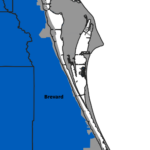6 Surprising Factors That Can Impact Your Home Insurance Rate

Shopping for a new home is an exciting time for many Floridians, but few know that the home they choose could make or break their home insurance rates. Whether you’re searching for an already built home or planning to construct one from the ground up, there are some important factors to consider before you purchase your dream home.
How Old Is It?
An older home may be charming and filled with snippets of Florida’s history, but it can also cost more to insure. This is because older homes tend to develop problems more often than newer ones. If you choose to purchase an older home, you can help reduce your home insurance rate by making renovations designed to prevent common problems associated with electrical wiring, plumbing, roofing, and foundation. Before starting any renovations, consult with your home insurer to make certain. Additionally, many Florida home insurance companies offer discounts for purchasing a new home because new structures are generally built with the latest safety codes. In 2001, the state implemented the Florida Building Code, which was designed to protect lives, help reduce property losses in a major storm, and provide a guide for home insurance companies to determine rates. Improvements under the Florida Building Code include:- Better structural design requirements to withstand greater wind pressures in South Florida and most coastal areas
- Wind-borne debris protection required on windows in all coastal areas and South Florida
- Improved roof covering systems requirements
- Approval system that ensures that products comply with wind resistance and impact resistance requirements
- Improved window performance labeling requirements
What Building Materials Were Used?
The materials used to build your home can also influence your home insurance rate. For example, it’s more expensive to insure a wood frame home than one constructed out of brick. Homes made out of wood materials are more prone to fire and wind damage, making them a greater risk than brick homes that are built to withstand these types of hazards.Hip Roof vs. Gable Roof: What’s the Difference?
The roof is your home’s first line of defense against wind, hail, wildfire, and other hazards, and it is considered the most important part of a house to home insurers. Once a home’s roof is breached, it increases the risk of more serious damage claims. This is why the shape of a home’s roof plays an important role in determining homeowner’s insurance rates in Florida. Let’s take a look at two of the most common types of roof shapes – hip and gable.
Where Is the Home Located?
Location significantly impacts homeowner’s insurance rates. Florida’s relatively expensive homeowner’s insurance rates can be attributed to the moderate to high risk of hurricanes, floods, and sinkholes throughout the state, and coastal homes may pay higher premiums to compensate for the elevated risk. Consider distance to the shore as you factor in possible insurance costs. On the contrary, if your home is located within five miles of a fire station or 1,000 feet of a fire hydrant, your home insurance premium may be lower. Take a moment to determine the distance between your house and these features and provide them to your insurance agent.What Features Are Included?
Certain features of your home can increase your insurance rates, while others are eligible for discounts.*Features That May Increase Insurance Rates
- Inground swimming pool
- Hot tub
- Custom decorative features
- Extensive landscaping
- Fireplace or wood-burning stove
- Deck
Features That May Decrease Insurance Rates
- Alarm system (burglar and/or fire)
- Gated entrance
- Wind mitigation


 My Account Login
My Account Login






















